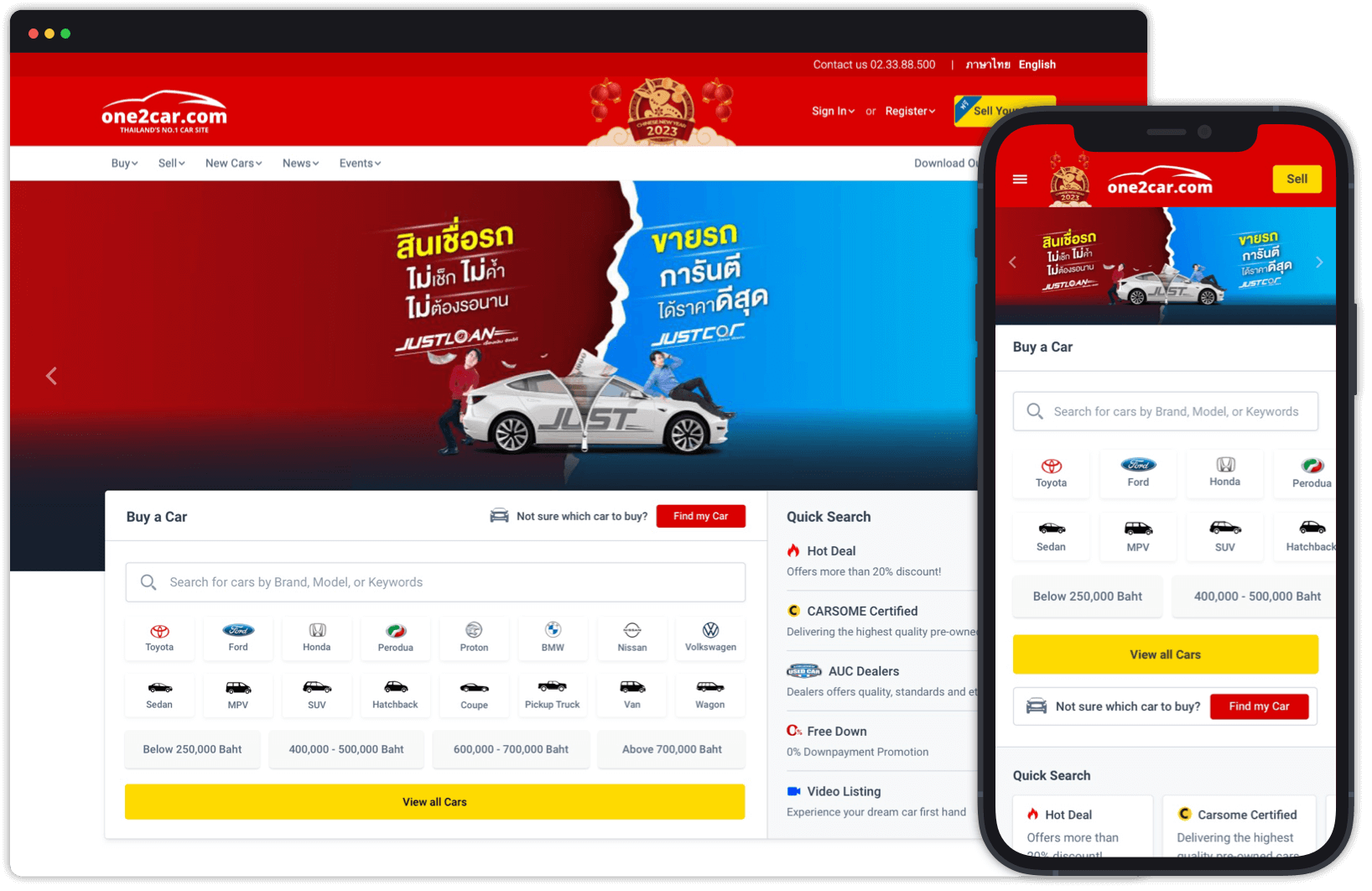Classified Search Form for O2C
One2Car: Strategic Redesign of the Core Search Funnel to Drive Lead Generation
* In accordance with my non-disclosure agreement, I have excluded and obscured sensitive information in this case study. The information presented is solely my own and does not represent the viewpoint of the company. All logos are copyrighted by their respective companies.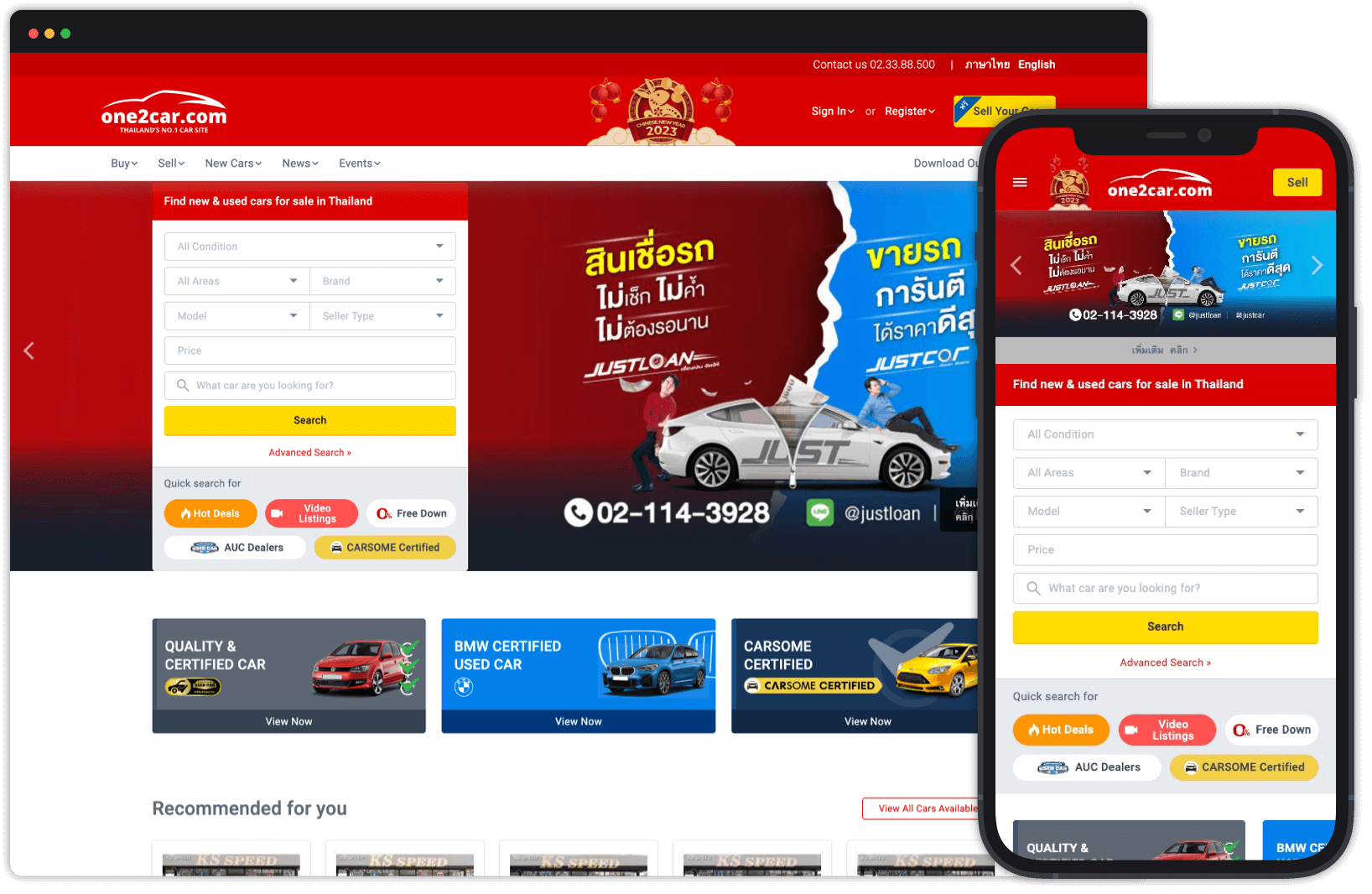
Overview
One2Car boasts a vast selection of vehicles and is a leading player in Thailand's automotive industry, specializing in used cars. They are revolutionizing the consumer-business interaction for automotive needs - from purchasing to owning and selling vehicles.
The Challenge: Leaking Leads at the Top of the Funnel
As the largest automotive marketplace in the region, our inventory is vast. However, analytics revealed a critical bottleneck:
- High Mobile Bounce Rate: Over 60% of traffic was mobile, but the legacy interface was non-responsive, causing immediate drop-off.
- Paradox of Choice: The previous filter system exposed all 30+ options at once. Heatmaps showed users were overwhelmed, leading to lower engagement with inventory.
The Goal
To optimize the "Search-to-Detail" click-through rate (CTR) by streamlining the discovery experience.
- Simplifying the form layout and reducing the number of fields to be filled out.
- Incorporating direct filtering options, such as brand, body type and price range.
- Adding autocomplete functionality for the main search fields.
- Designing the 'Car Discovery' feature, which guides users through a step-by-step process to assist them in finding their desired vehicle.
By achieving these goals, the search form will become more user-friendly and efficient, reducing the frustration of users and increasing the chances of them finding the desired vehicle, resulting in increased sales and satisfaction.
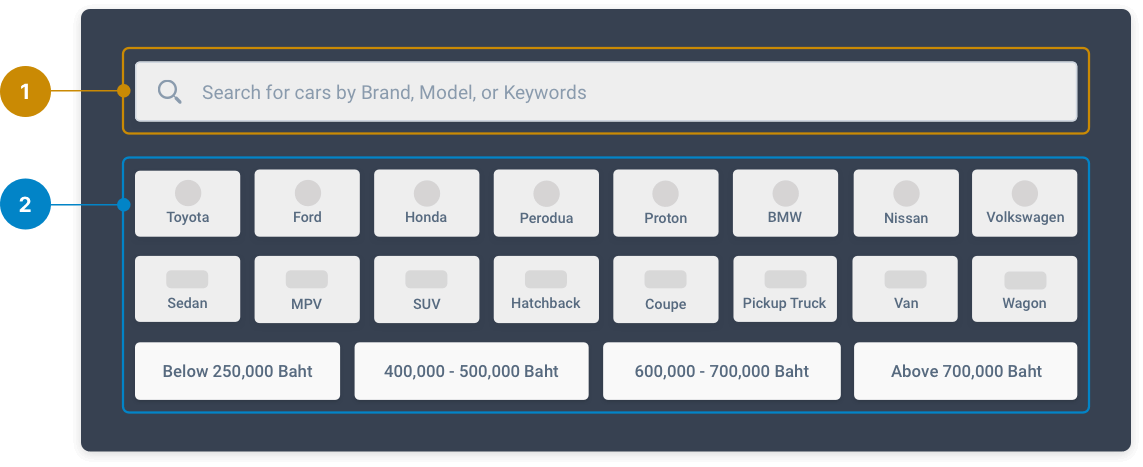

The "Car Discovery" feature (Find my Car)
Having a step by step process for buying a car can make the process easier, clearer, and more enjoyable for users. It can also help users make informed decisions and build confidence in the process.
-
1
Budget
Determine users' affordability
-
2
Brand (Car maker)
Users select preferred car brand
-
3
Car Body type
Users' preferred car body type.
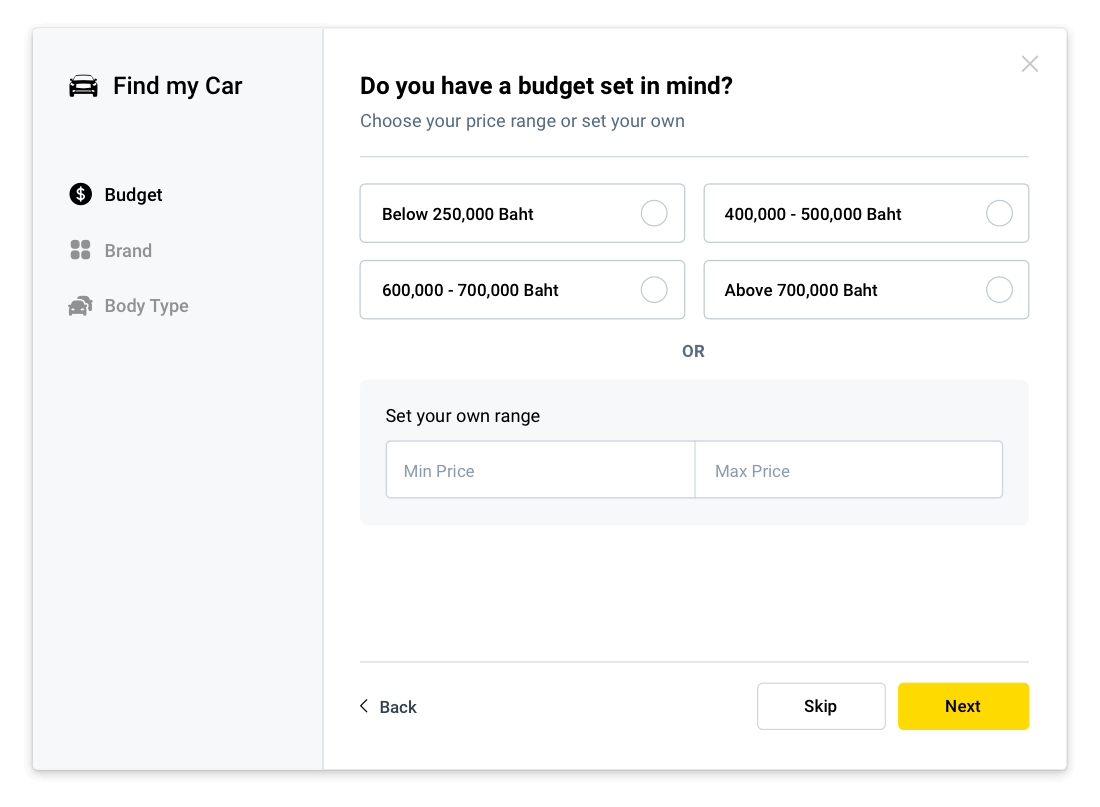

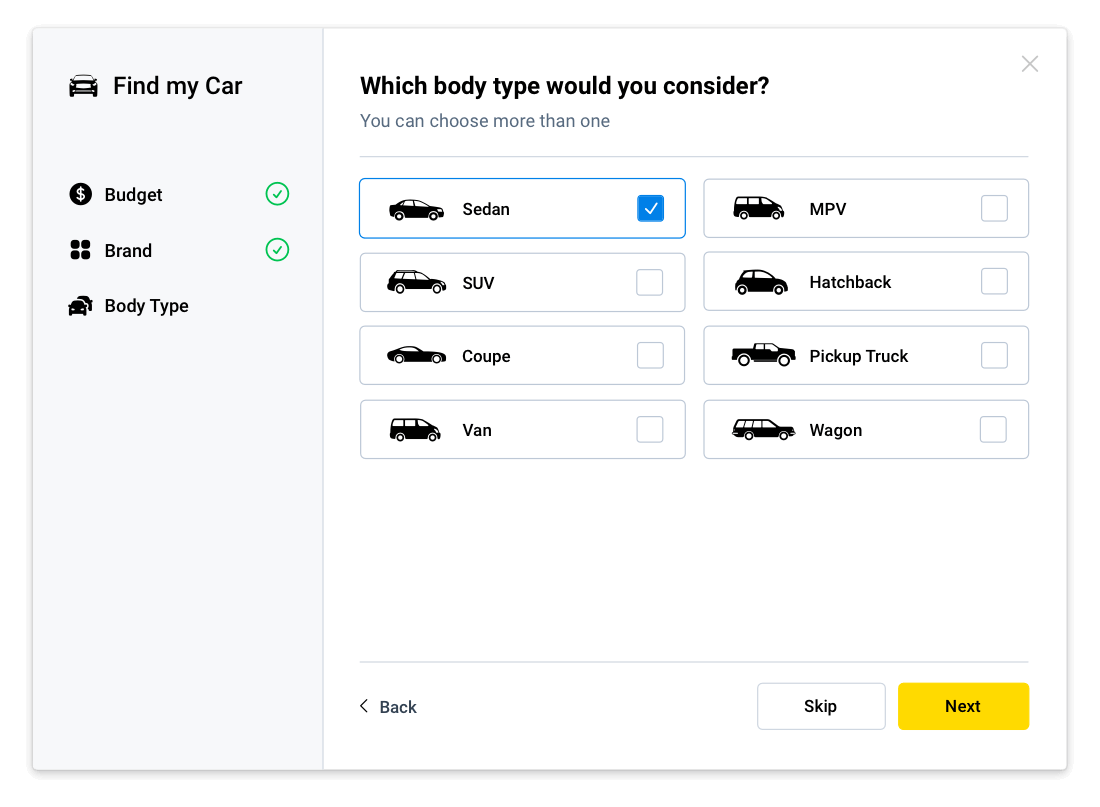
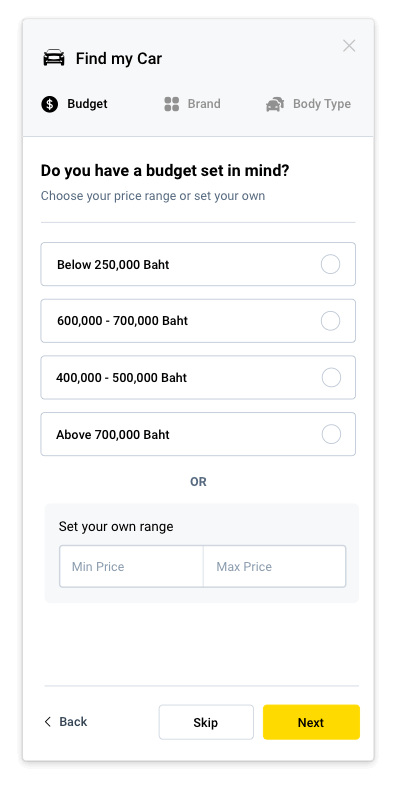
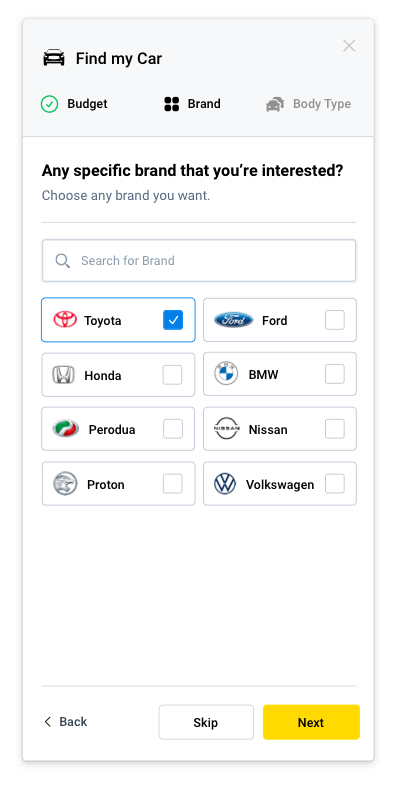
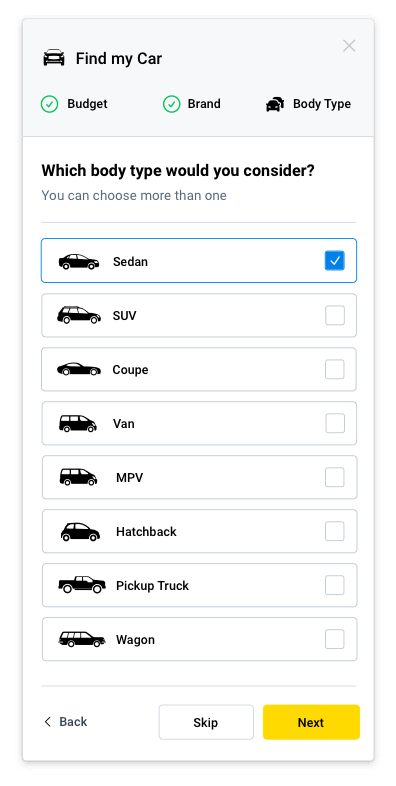
The Approach
Strategic Execution: Data-Informed & Scalable: To de-risk the redesign, I moved away from subjective preferences and focused on structural improvements grounded in user behavior.
- Phase 1 (The UI Lift): We kept the existing backend logic but completely overhauled the frontend presentation.
- Simplified Taxonomy (Progressive Disclosure): We re-architected the Information Architecture to reduce cognitive load. We exposed high-value filters upfront and nested niche options (like "Fuel Type") under an "Advanced" toggle—keeping the UI clean without sacrificing power.
- Modular Component Design: Instead of designing bespoke pages, we built a library of reusable filter components (sliders, tags, bottom sheets). This ensured design consistency and allowed engineering to easily scale the search experience to other vehicle verticals.

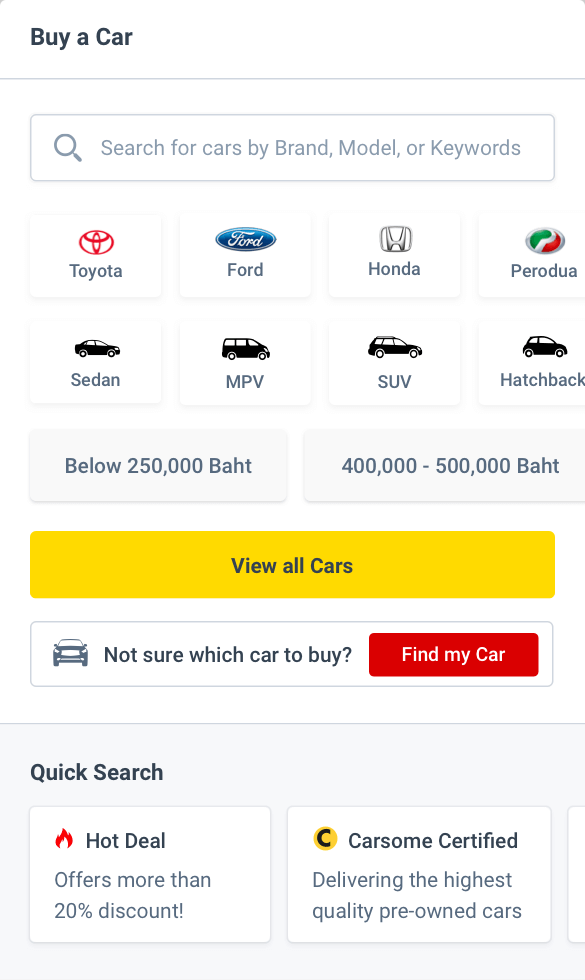
Reflections & Impact
While this project began as a usability fix, it evolved into a foundational modernization of the One2Car platform.
- Modernization as a Driver: The redesign successfully transitioned the product from a legacy desktop-centric interface to a responsive, mobile-first experience. This was critical for aligning the product with our user base, the majority of whom browse via mobile devices.
- Operational Efficiency: Beyond the user experience, the biggest internal win was establishing a scalable design language. By componentizing the search filters and cards, we moved away from "one-off" page designs. This reduced technical debt and accelerated the development velocity for future vertical expansions.
- The Takeaway: This project reinforced that in legacy marketplaces, clarity is the ultimate feature. By removing clutter and introducing progressive disclosure, we didn't just make the product look better—we made the inventory accessible again.
